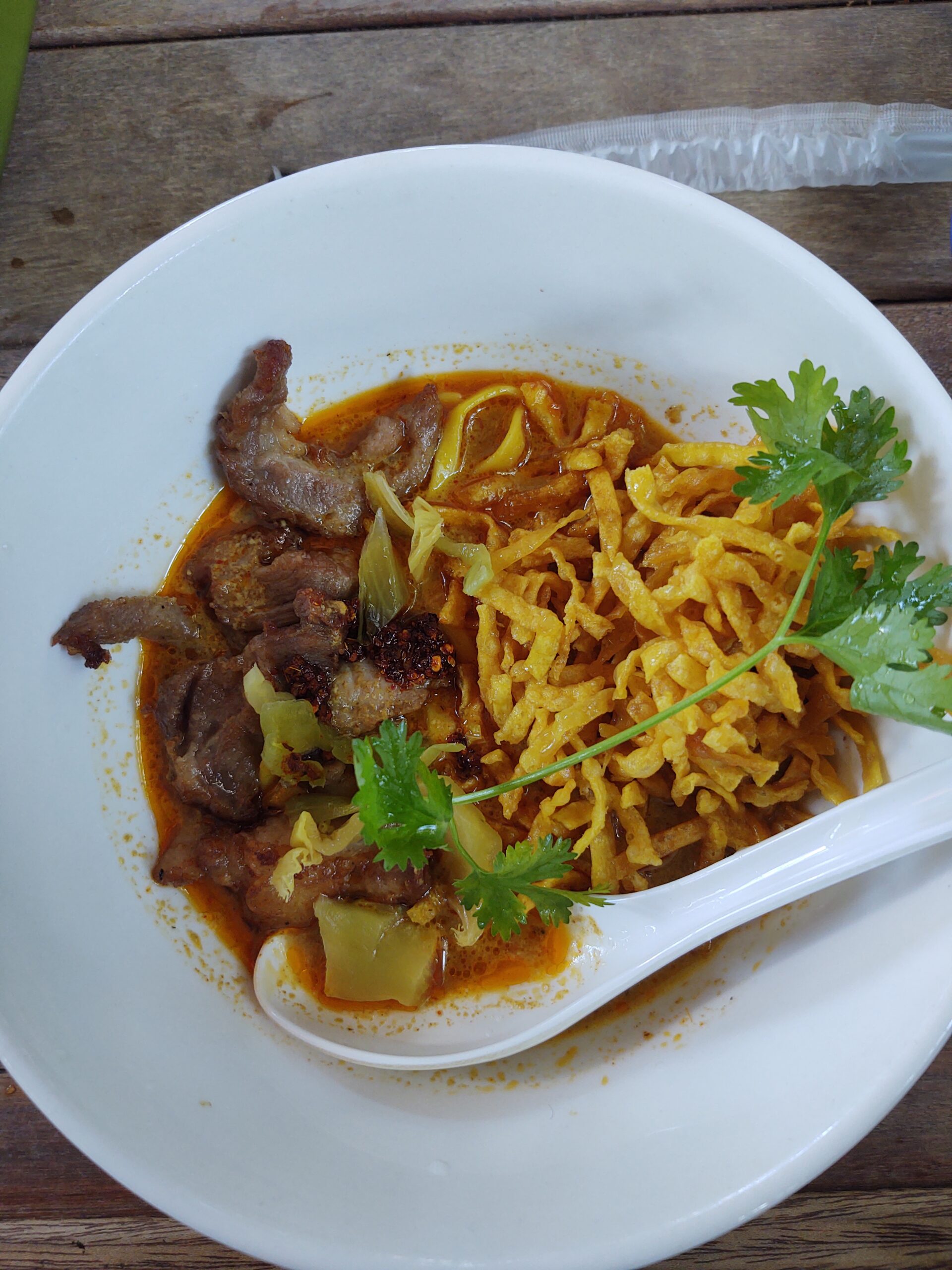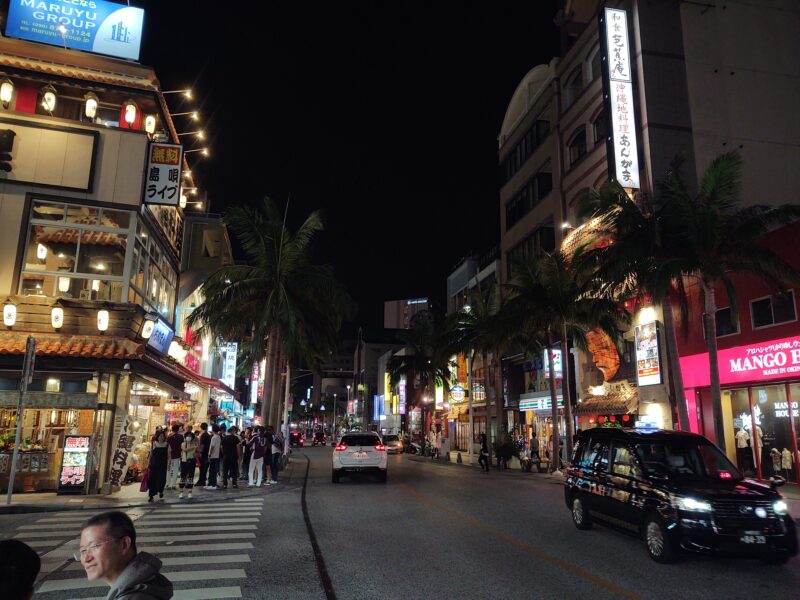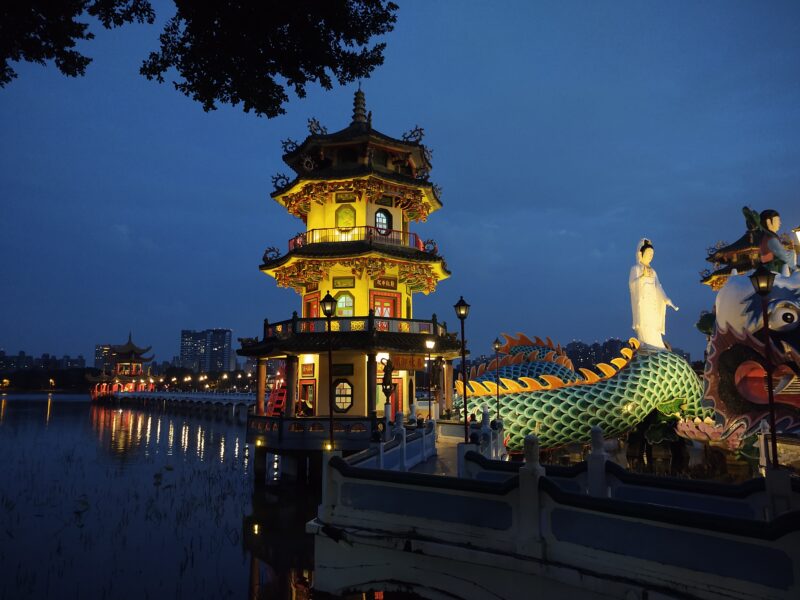I’ve been living in Chiang Mai, Thailand for about two months now. Located in the northern mountains of the country, Thailand’s second-largest city has become one of the world’s most popular destinations for those who wish to live abroad, especially in the last decade.
While tourists in Chiang Mai will likely focus on major sightseeing attractions, it’s a completely different experience to live here. I haven’t gone to many temples, and though I have visited some of the picturesque nearby mountains and villages, I spend most of my time working from chic cafes and coworking spaces.
If you’re living abroad for the first time, Chiang Mai is a great place to learn a new lifestyle while staying well connected and comfortable. You can find any food you crave (including Western dishes), WiFi is everywhere, and the people are kind and friendly. If you’re a seasoned digital nomad, I’m sure you already know and love it here.
Wondering what it looks like to live in Chiang Mai? These ten photos will show you what I do more-or-less everyday. I’ve intentionally left out sightseeing attractions to focus on daily life in Chiang Mai, from my perspective as a foreigner and digital nomad.
1. Cafes
Chiang Mai is known for a lot of different things; for me, the first that come to mind are coffee and cafes.
Delicious coffee can be found all around town. There is practically a cafe on every corner, especially in the old city, ready to serve you their tasty brew. Often, it’s locally-sourced from the nearby mountains (“doitung” coffee).
Bear in mind that while it’s easy to find espresso beverages, it’s a lot harder to find classic “drip” coffee. If you get tired of cappuccinos and lattes, you can get unbelievably delicious, locally-sourced drip coffee at Akha Ama Coffee (La Fattoria) in the old city. Alternatively, they have it at Starbucks, but it costs way more. Or you could buy a coffee machine and brew it yourself.
Also keep in mind that not all cafes serve food (particularly the small ones), but most do.
There is so much to love about Thai hospitality. Every place you go is colorful and beautifully decorated. Thailand has perfected feng shui; there is never “too much” going on, where the aesthetic becomes overwhelming. But neither is there ever “too little.” Each place I’ve visited is perfectly balanced, as if guided by its own unique vibe and personality.
Wandering into bookstores here, I’ve seen countless encyclopedia-like books on interior design. They are filled with pictures of beautiful cafes and restaurants, and the location captions always list different cities in Thailand. It warms my heart to know that there is a truly endless supply of beautiful places to sit and relax here, whether it’s for a coffee, meal, or night out, and that the country draws inspiration from itself.
2. Temples
While this post is about living in Chiang Mai, not sightseeing, it still fundamentally must include temples because, like cafes, they are everywhere. There are dozens in the 1-square kilometer old city alone, including the beautiful and austere Wat Inthakhin Sadue Muang (“Temple Of The City Navel,” above).
Even if you don’t pop into a temple (which you can anytime during daylight hours), their presence can be felt around the city. I highly recommend stopping by sometime. Isolated from the city’s hustle-bustle and noise, you can return to a state of complete silence in the temples, even in the center of town.
In most temples, nobody will stop you from taking photos or wearing shorts. But if you want to be respectful, you should dress and act modestly; you should also never take photos of monks or take photos where your back is turned to a Buddha. It’s also considered disrespectful to get a tattoo with a Buddha image on it.
If you get an annoyed look from a monk, this may explain why.
3. Food
With Thailand’s reputation as a foodie paradise, Chiang Mai certainly doesn’t disappoint. Besides the delicious classics, Chiang Mai also has dozens of local Northern Thai dishes that can’t be found anywhere else in the country. The northern region historically had a different culture, called Lanna, which was only united with the rest of Thailand 130 years ago.
Whether it’s delicious khao soy, smoky-savory hung lay curry, or spicy northern sausage, the food you get in Chiang Mai is unlike anywhere else.
Thai food is known for its spiciness, but the heat wasn’t what I expected. Back home, I like a medium amount of spice, but I don’t bother with the super hot stuff, which always just feels unnecessarily painful. But the food I’ve had here, while often spicy, is a different kind of spicy. It’s spicy for the sake of flavor, rather than spicy for the sake of spicy. The spiciness always contributes to the overall taste of the dish, and this makes it not only more manageable, but enjoyable. I eat and love much spicier food here than I ever would in America.
Besides the abundance of Thai food, you can also find excellent food from all over the world in Chiang Mai. Expect to pay a little more for pizza, burritos, and burgers than the temptingly inexpensive local dishes, but rest assured, they are just as delicious as they are in America.
There’s also incredibly good Asian food here, with a huge number of Japanese and Korean places, plus the occasional Chinese and Indian restaurant.
Myanmar (Burma) is just a few hundred miles away, and I’ve had the pleasure of having Burmese food a few times now. At the intersection of Indian and Thai food, it is superb.
Pretty much every meal in Chiang Mai is a good meal; not to mention, an inexpensive one too. There is a place for every budget, though, and if you want to splurge on fine dining, there are plenty of opportunities for that as well.
4. Coworking Spaces
A little bit of consistency goes a long way to be more productive. While finding a new cafe everyday is easy and fun, it saves a lot of brainpower to avoid the decision altogether and pick a consistent place to work from.
Fortunately, there are dozens of coworking spaces throughout the city, many of which offer very affordable weekly and monthly membership packages. I’m a monthly member at Yellow, which is one of the larger ones and is popular among foreigners and cryptocurrency traders (I promise I’m only one of these two things). I’m here every weekday from 9am-6pm with a break for lunch and Thai class. I spend my days working on my freelance copywriting contracts, homework for my language class, and other writing projects, like this blog.
In the past decade, Chiang Mai secured its place on the map for remote workers and digital nomads for two main reasons. First, it’s inexpensive, so your salary goes a long way here. But second, and far more importantly — the infrastructure here is remarkably good. WiFi is available at every cafe, and the coworking spaces have even faster and more reliable internet than anywhere I lived in the U.S., with download and upload speeds over a staggering 200 Mb/sec. It’s easy and cheap to stay connected: my unlimited-data phone plan cost under $30 total for three months!
Almost all coworking spaces will also give you a free coffee everyday and have a cafe on-site, so don’t worry about missing your daily caffeine by skipping the coffeeshop.
5. Thai Lessons
Thai language (ภาษาไทย) is extremely different from Western languages. Besides the completely different alphabet of 43 consonants and 28 vowels — how many ways can you say uhh? — it has a completely different sentence structure: verbs are never conjugated, modifiers and adjectives always come after subjects, and the same word can have five different meanings depending on the tone you say it in.
Notwithstanding the challenge, learning the language is one of the surest ways to find a deeper connection with local culture.
There are plenty of language schools around, many of which offer appealing packages including a 1-year ED visa with no hassle or virtually any effort on your part (just cash). But if you don’t need a visa, I’d argue you’ll learn faster in 1-on-1 lessons with a private teacher. I highly recommend my teacher, Ajaan Lah (“ajaan” = teacher), who I study with everyday.
Not only is Ajaan Lah a fantastic teacher, but she has a great sense of humor and has become both a friend and resource for me to learn more about Thai culture. We share plenty of details about our personal lives (I’ve learned this is common here), talking about our relationships and different thoughts and ideas, contextualizing our language practice with the words of our lives.
When I first met Ajaan Lah, she asked me if I wanted to learn the “real” Thai or the “fake” Thai. Obviously I said the “real,” and then asked her what she meant. The “real” Thai involves learning how to read and write this bizarre, hieroglyphic-looking language in addition to speaking it. It’s the less-commonly taken route, and she promised it would be a challenge. The “fake” Thai is to just focus on spoken Thai, which many foreigners pick up quickly.
Fortunately for me, I’ve picked up Thai and have learned to read and write faster than almost any student she’s ever had. She says I have a “good brain.” Similarly, all my Thai friends are quite impressed, particularly by how quickly I can insert the profanities they teach me into hilarious sentences. It’s not my first foreign language (I speak Italian) and I’m also a musician, so that probably helps, besides my genes — my grandmother spoke several languages too.
Like everything here, lessons are quite affordable; I only pay $12 for each 1.5 hour one-on-one session. But when you do it daily and add it up, it’s actually the single largest expenditure while I’m here — over four times as much as my rent in my shared apartment with my girlfriend. To me, it’s worth every penny.
6. Markets
Markets — night markets in particular — are one of those lovely cultural phenomena that we don’t really have in the U.S.; at least, not nearly to the same extent and scale as here in Southeast Asia. (I guess we have flea markets, but… not like this.)
Consider that in Thailand, it’s far more expensive to buy groceries and cook for yourself than it is to go out to eat for every meal. Food is everywhere. Not just restaurants, but also along streets and packed in crowded markets.
You can find everything. Western and foreign food isn’t just in restaurants; you can just as easily pick up a burger and fries or sushi at a streetfood stand. Markets usually have more permanent installments of tiny vendors, slinging everything from fried chicken to pad Thai, fried crickets, and fruit shakes.
It’s a shopper’s paradise, too. The markets are filled with shops selling any item you could imagine — and usually at a much lower price than you’d find elsewhere, too. I’ll be buying plenty of clothes, decorations, and gifts while I’m here, so let me know if you want anything.
7. Massage Parlors
While I don’t get a massage everyday, I do still get them pretty often, around twice a month; whereas back home, I had never received a massage.
Besides the feng shui, food, shopping, temples, and everything else, Thai hospitality is, of course, famous for its massages. It’s all part of the same mindset: come in, sit down, relax, and let us take care of you.
For an hour-long massage in Thailand, expect to pay anywhere between 150 and 300 baht (between $4.50-$9.00). You can also extend it to a multiple-hour session if you’d like and usually get an even better deal. I once asked my massage therapist, who had been going pretty hard, if she ever got tired. She just laughed and said “no.”
I’ve had a few massages throughout the city and the country at this point, and they’ve differed quite a bit. Finding the right amount of pressure that you like is important. Too little, and you won’t feel much different; too much, and it can be quite painful (although you’ll still probably feel pretty good afterwards, even if it is hard to walk).
Most massage parlors will invite you to sit down for complimentary tea after your massage is finished. Many will also provide you different clothes to wear during your visit.
8. Malls
Like the markets, the malls here are enormous. Consider that the wealthiest man in Thailand is the owner of the Central Festival mall chain — not oil, tech, or something else like that, but retail — and the branch in Chiang Mai is the largest mall in the city.
In my Bangkok post, I mentioned how the giant metropolis’ malls were comically larger than those “everything is bigger in Texas” malls in Texas. Chiang Mai’s shopping plazas are similarly massive.
The malls bring that aesthetic experience to the next level: they’re beautifully decorated, colorful, and brightly lit up. Some people get dressed up to go to the mall as if they’re going out to a swanky rooftop bar! I feel immediately energized just walking in the door, dazzled by the abundant lighting. It’s fun to go even if I’m not looking to buy anything.
You can find great food in the malls too; almost all of them have food courts, and some even have streetfood vendors inside the mall.
9. Al Fresco
The weather here is inviting year-round, and it’s never too cold to go outside. Sometimes, it’s a little hot (especially for us foreigners, but Thai people don’t seem to mind), but by the evenings, it’s usually the perfect temperature to stroll around or eat outside. I’ve never worn a jacket in my two months here.
Whether you’re in the mood for the market, the mall, the bar, the restaurant, or even some massage parlors, you can find one outdoors so you can sit back, relax, and enjoy the hospitality in the fresh air.
There’s so much to do, too. While most bars are still closed due to pandemic restrictions, the countless markets and malls around town provide endless opportunities to hang out with your friends, wandering around and occasionally stopping somewhere for some delicious food.
This past weekend was the reopening of the famous Sunday Walking Street Market, with shops lining the street continuously for over a mile through the old city. I can’t think of a better way to go out and have fun than that!
10. Exploring
As Thailand’s second-biggest city, Chiang Mai has plenty to do, and there are countless places to explore in every part of town.
Just strolling around, you’re sure to find everything I mentioned in this article, and so much more. You can also rent a moped here very cheap (around $5 per day, and less for weekly and monthly rentals), but I would only recommend that if you already know how to ride it. Roads are very busy here and there is a steep and dangerous learning curve. That said, it’s not hard once you get the hang of it.
Depending on where you’re located, you’ll have different opportunities to explore. Unfortunately, it’s not a very walkable city; that’s one of the only downsides to living here. Chiang Mai is very spread out and intracity public transport is virtually nonexistent. Taxis and rideshares through the Grab app (owned by Uber) are easy and cheap, but they certainly add up if you use them all the time. Expect to pay $2-$4 for a ride, depending on how far you’re going.
If you go the walking route and don’t rent a bike or take taxis all the time, you’ll probably end up staying somewhere around Nimman, Santitham, or the old city. These are all located pretty close to each other with about a 30 minute walk from one to the next.
In another post, I’ll talk more about some of the sightseeing outside of Chiang Mai, which is best reached by private car hire or motorbike. Even if you’re living here, it would be a shame to miss all the natural beauty that’s in the surrounding regions.
Digital Nomad Daily Life In Chiang Mai, Thailand
Chiang Mai is the first city that I’m living in outside the U.S. as a location-independent freelance copywriter, and I completely love it. My days are full of delicious food and coffee, comfortable working spaces, beautifully decorated shops, and lively markets. Everything you need is nearby, affordable, and almost always good quality, and the people are some of the friendliest I’ve ever met. (While you’ll surely interact with people daily, the nature of those interactions will differ greatly from person to person, so I didn’t include them in this post.)
In January, I’ll be leaving Chiang Mai and moving to Sri Lanka. I’m excited for my adventures and exploration to continue, but I will sorely miss the city and my friends.
In the future, I hope to come back someday. Chiang Mai would make the perfect hub to explore all of Southeast Asia, but unfortunately all Southeast Asian countries are still closed for tourism (except Thailand) at the time I’m writing this article.
In the meantime, the adventure will continue in South Asia for the first half of next year.
With peace & love,
Andrew
P.S. What are your favorite cities around the world? Would you like to live there? Why/why not? Leave a comment below!



Fes. Greatest walking city in the world. Locals get lost and old Medina is amazing. Yes. Want to live there.
Also Venice. Edinburgh I have lived in and also right up there.
Interesting, I’d love to get to Morocco someday! I’ve visited (but not lived in) Venice and Edinburgh; both are quite nice. Edinburgh has a very homey feel, seems like a very livable city.